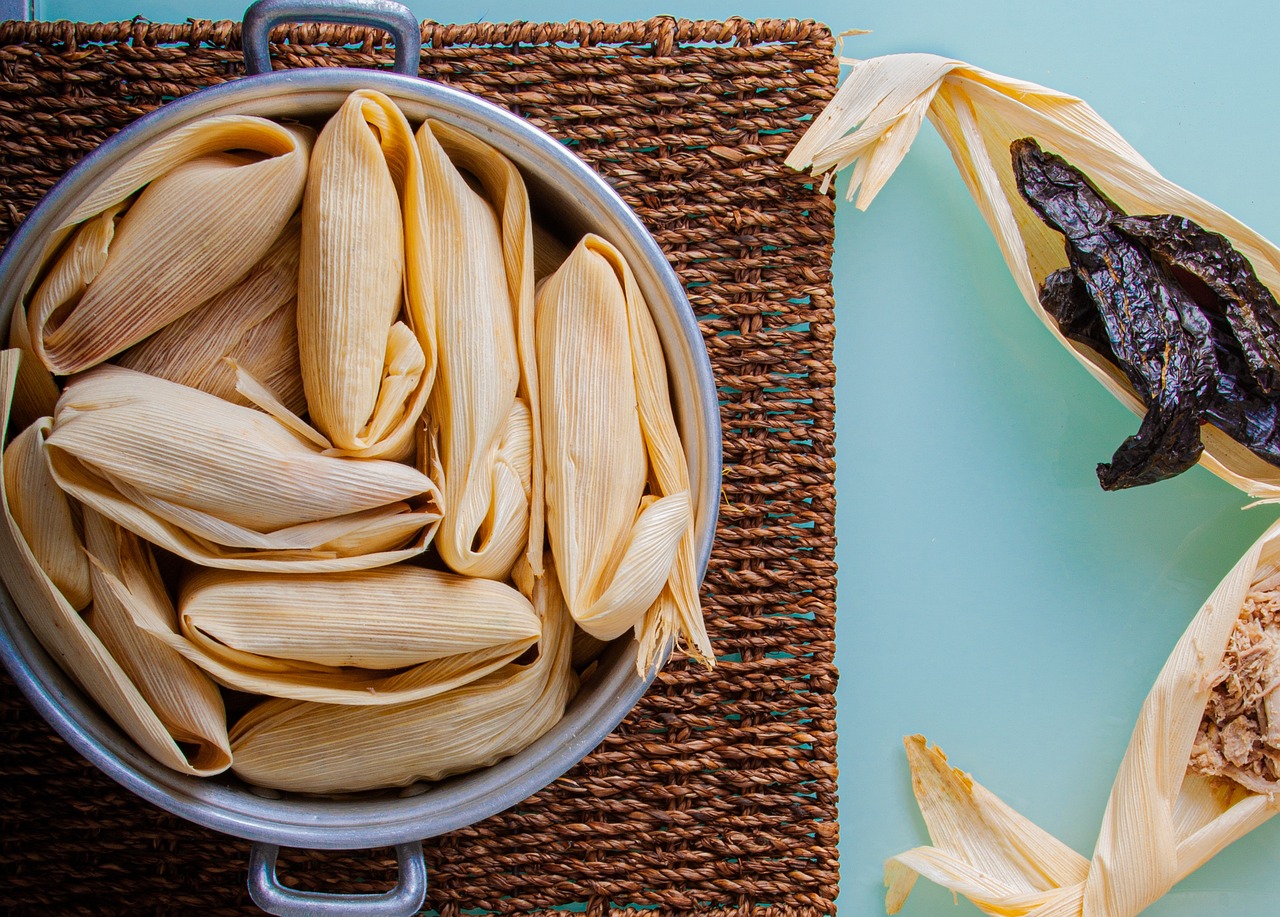
New Year’s celebrations in Spanish-speaking countries are woven with a rich diversity of traditions and customs.
From the exhilarating cheers of the clock striking midnight in Madrid’s Puerta del Sol to the enchanting burning of “Años Viejos” (Old Years) in Ecuador, each nation has its own unique way of welcoming the new year.
Discover how to say “Happy New Year” in different ways and immerse yourself in the unique celebrations of the Spanish-speaking world!
Contents
Download:
This blog post is available as a convenient and portable PDF that you
can take anywhere.
Click here to get a copy. (Download)
Happy New Year! Spanish New Year’s Greetings
Happy New Year! Depending on who you’re wishing a prosperous new year, you can use a different greeting. Here are some common ways to wish someone a happy new year in Spanish.
How to Say “Happy New Year” in Spanish
Here’s the most common, straightforward way to say happy New Year in Spanish:
But it’s not the only way to say it! Read on to see even more New Year’s wishes.
Casual Greetings
Formal Greetings
Business and Professional Greetings
All-purpose Greetings
Spanish New Year’s Vocabulary

Talk about the new year with these essential vocabulary words:
How to Write New Year’s Messages in Spanish
Writing New Year’s messages in Spanish allows you to convey warm wishes and good intentions to your Spanish-speaking friends and family. Here’s a brief guide on how to do so, along with important vocabulary:
- Start with a greeting: Begin your message with a friendly greeting such as Querido/Querida (Dear) or Hola (Hello).
- Express your wishes: Share your New Year’s wishes using phrases like ¡Feliz Año Nuevo! (Happy New Year!) or Que este nuevo año te traiga… (May this new year bring you…).
- Reflect on the past year: Acknowledge the past year and its experiences. For instance, you can write A pesar de los desafíos, espero que este nuevo año sea mejor (Despite the challenges, I hope this new year is better), or Mirando atrás, estoy agradecido por… (Looking back, I’m grateful for…).
- Mention resolutions or goals: If applicable, talk about resolutions or goals for the new year. For example, Espero que logres todos tus propósitos de año nuevo (I hope you achieve all your New Year’s resolutions).
- End with well wishes: Conclude your message with kind words, like Con cariño (With affection), Un fuerte abrazo (A big hug) and Te deseo lo mejor en el año que viene (I wish you the best in the coming year).
By using these phrases and vocabulary, you can craft heartfelt New Year’s messages in Spanish to make your loved ones feel special and cherished during this festive time!
New Year’s Resolutions in Spanish

When a new year comes around, you might set a resolution (or a few) that reflects your desire for self-improvement and personal growth in the coming year. The same is true for Spanish-speaking cultures, where making propósitos de año nuevo
(New Year’s resolutions) is a common practice.
Just like in many other cultures, the start of a new year is seen as an opportunity for a fresh beginning and a chance to set goals that will lead to positive changes in various aspects of life:
- Family and Community: In many Spanish-speaking countries, there’s a strong sense of community and family. New Year’s resolutions often extend beyond personal goals to include intentions for improving relationships and contributing positively to the community.
- Symbolism: Some Spanish-speaking cultures have symbolic rituals related to resolutions. For instance, people might write their resolutions on a piece of paper, burn it and then scatter the ashes as a way to release the past and embrace the future.
- Health and prosperity: Health-related resolutions are common, reflecting the value placed on well-being. There’s also an emphasis on prosperity, both in terms of financial success and personal fulfillment.
I personally believe that resolutions (no matter when they’re made) should be specific and attainable. Here are a few examples of Spanish New Year’s resolution.
Why not write your own New Year’s resolutions in Spanish this year?
If that last resolution resonates with you (and if you’re here on our blog, then it probably does), I have a tip for you: Don’t wait to start. It doesn’t have to be a new year for you to start learning Spanish, or any other language you’ve always wanted to learn.

Start by setting some specific goals, then dive right in. You don’t even have to start with a textbook—interactive programs like FluentU make learning Spanish as easy as watching videos. Really: The videos, which include short clips like movie trailers, commercials, music videos and more, all have subtitles in Spanish and English so you can keep up no matter what your level is.
Plus, FluentU uses authentic Spanish so you’ll be immediately exposed to language in a natural and realistic way.
Spanish New Year’s Customs and Traditions
There are many New Year’s customs and traditions across various Spanish-speaking countries. Get into the festive spirit and cultural richness with these New Year’s celebrations:
- Las doce uvas de la suerte
(The Twelve Lucky Grapes): In Spain and many Latin American countries, people eat 12 grapes as the clock strikes midnight on New Year’s Eve, making a wish with each grape for good luck and prosperity. - Quema de Años Viejos
(Burning of Old Years): In Ecuador and other Latin American countries, people create effigies representing the old year and burn them at midnight to symbolize letting go of the past and welcoming the new. - Quema de Muñecos
(Burning of Dolls): In Guatemala, people create and burn dolls representing disliked or negative things from the past year to start fresh. - Velorio de Año Viejo
(Wake of the Old Year): In parts of Colombia, people gather for a symbolic wake for the old year, sharing anecdotes and memories. - Año Nuevo en la Playa
(New Year’s on the Beach): It’s common to celebrate New Year’s on the beach, enjoying fireworks, music and a festive atmosphere. - Baño de la Prosperidad
(Bath of Prosperity): Some people take a symbolic bath on New Year’s Eve to wash away negativity and attract prosperity for the coming year. - Ropa Interior de Colores
(Colored Underwear): It’s traditional to wear colored underwear, each color symbolizing a different wish (e.g., red for love, yellow for wealth). - Barrer la Mala Suerte
(Sweeping Away Bad Luck): Some people sweep their homes before midnight to rid them of bad luck and negative energy from the previous year. - Reyes Magos Procession
(Three Wise Men Procession): In Spain and some Latin American countries, the arrival of the Three Wise Men on January 6th is celebrated with parades and gift-giving to mark the end of the holiday season. - Desfile de Año Nuevo
(New Year’s Parade): Cities like Mexico City hold colorful parades with floats, music, and dancing to celebrate the start of the new year. - Fuegos Artificiales
(Fireworks): Fireworks displays are common throughout Spanish-speaking countries to welcome the New Year with a bang and colorful lights. - Campanadas
(Chimes): Many towns and cities have the tradition of ringing church bells or other chimes at midnight on New Year’s Eve to mark the beginning of the new year.
Spanish New Year’s Food and Drinks

Do you have a traditional New Year’s meal? The following foods and drinks contribute to the festive atmosphere and culinary traditions of New Year’s celebrations across Spanish-speaking cultures.
Here are some traditional Spanish New Year’s food and treats:
- Lentejas
(Lentils): In Spain and some Latin American countries, lentils are eaten as a symbol of prosperity and good luck for the coming year due to their coin-like appearance. - Pavo Asado
(Roast Turkey): Roast turkey is a popular dish for New Year’s celebrations, often enjoyed in family gatherings. - Tamales
(Tamales): These savory filled corn dough pockets wrapped in corn husks are a traditional New Year’s dish in many Latin American countries. - Cordero Asado
(Roast Lamb): Roast lamb is a festive dish enjoyed during New Year’s celebrations, especially in Spain. - Cotechino con Lentejas
(Sausage with Lentils): A dish from Spain and Italy, cotechino (a type of sausage) is often served with lentils for luck and prosperity. - Bacalao
(Salted Cod): Bacalao is a common dish in Spain for special occasions, including New Year’s, often served in various preparations. - Roscón de Reyes
(King’s Cake): In Spain, this ring-shaped cake is enjoyed on January 6th (Three Wise Men Day) and is often filled with cream or other sweet fillings.
And here are some traditional drinks to enjoy during the celebration:
- Cava
(Cava): A sparkling wine similar to champagne, cava is a popular choice for New Year’s toasting in Spain. - Sidra
(Cider): In regions like Asturias, Spain, and some parts of Latin America, cider is enjoyed during New Year’s celebrations. - Ponche Crema
(Eggnog-like Beverage): A creamy, rum-based drink often enjoyed in Venezuela during the holiday season. - Cola de Mono
(Monkey’s Tail): A traditional Chilean drink made with coffee, milk, spices, and aguardiente (a type of alcohol). - Coquito
(Coquito): A Puerto Rican coconut-based drink often enjoyed during Christmas and New Year’s celebrations. - Anís
(Anise Liqueur): Anise-flavored liqueurs, such as Anís del Mono, are popular for toasting in Spain and other Spanish-speaking countries.
Test Yourself: Spanish New Years Quiz!
What is the significance of “Las doce uvas de la suerte” in Spanish New Year’s celebrations?
What is “Quema de Años Viejos” in Spanish New Year’s traditions?
What is the traditional symbolism of wearing colored underwear on New Year’s Eve?
What is “Roscón de Reyes” commonly enjoyed on January 6th in Spain?
What is the “Reyes Magos Procession” celebrated on January 6th in Spanish culture?
Which food is commonly eaten for luck and prosperity in Spanish New Year’s celebrations? a) Turkey b) Tamales c) Burgers
What drink is similar to champagne and is often used for toasting during New Year’s celebrations in Spain?
What is “Ponche Crema” often enjoyed during New Year’s celebrations?
What does “Brindar por…” mean in English? a) Burning old calendars. b) Making New Year’s resolutions. c) Toasting to…
What does “Feliz Año Nuevo” mean in English?
You’ve mastered happy new year in Spanish. Well done!
Prepare to greet the new year… in Spanish! Eat, drink and use the phrases in this post to celebrate the arrival of a new year, the way Spanish speakers do.



